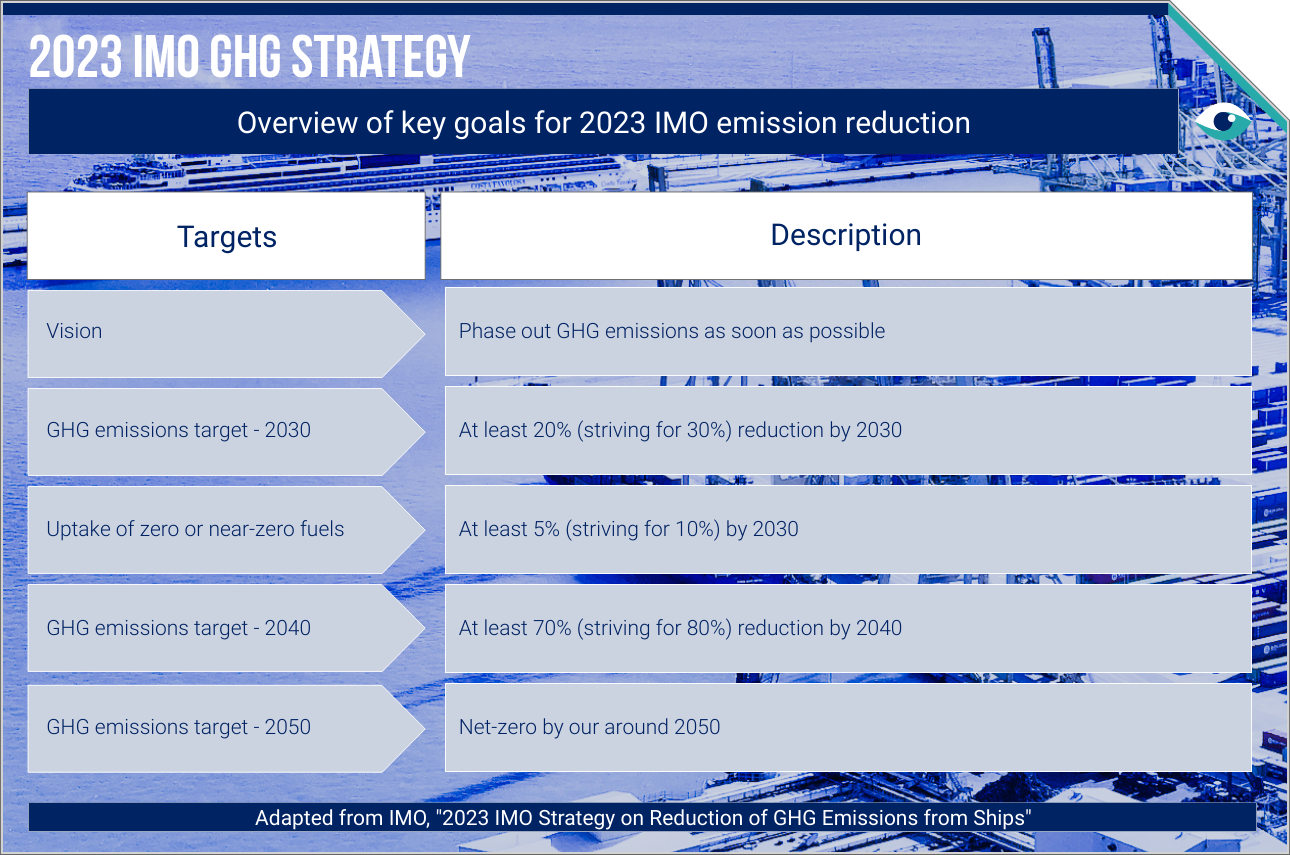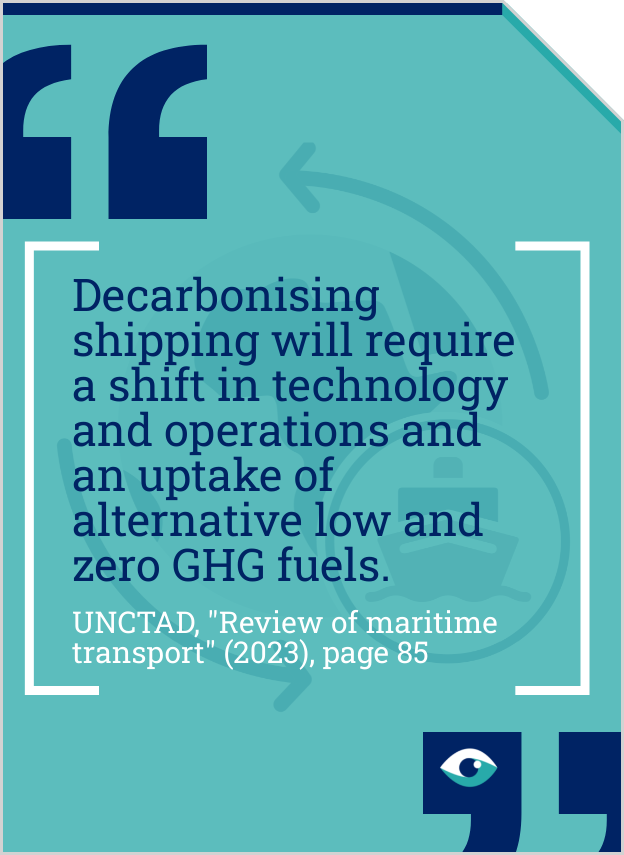Starting in January 2024, shipping emissions will be included in the EU ETS, which introduces new costs and may set a global precedent. This, coupled with the IMO’s revised GHG reduction strategy targeting net-zero emissions by 2050, intensifies the urgency for maritime industries to reduce GHG emissions. The strategy enforces the Energy Efficiency Existing Ship Index (EEXI) for existing vessels and enhances the Energy Efficiency Design Index (EEDI) for new ships to decrease carbon intensity. Consequently, the industry is escalating its use of alternative fuels, retrofitting vessels, and ordering new ships to comply with these stringent standards.

Reducing GHG emissions in the maritime transport industry
Entities face higher costs and compliance risks without effective GHG management, showing need for efficiency measures and cleaner fuels
Planet: Environmental impacts
Shipping
AT A GLANCE
Starting January 2024, shipping emissions will be included under the EU cap-and-trade program, setting a global precedent.
The revised International Maritime Organisation (IMO) strategy targets net-zero greenhouse gas (GHG) emissions by 2050.
Retrofitting vessels, stricter standards for new ships, and increasing use of cleaner fuels are key to meeting IMO goals.
IMO’s 2050 net-zero goal
The IMO strategy sets ambitious goals for maritime transport to achieve net-zero by 2050, emphasising technical and operational solutions, including adopting alternative fuels and improving ship energy efficiency. Additionally, a review by the United Nations Conference on Trade and Development (UNCTAD) highlights the significant investments required to retrofit ship designs, engines and operations for low and zero carbon fuels. These costly technological innovations are crucial for meeting the IMO’s objectives.
Alternative fuels
UNCTAD notes that transitioning to cleaner fuels, such as LNG, methanol, ammonia and hydrogen, is still in its early stages, with only 1.2% of the global fleet using these alternatives. This transition, crucial for reducing emissions, introduces significant cost implications as fuel expenses account for up to two-thirds of operating costs. The maritime industry must balance these increased fuel costs against meeting stricter global emission standards. Yet, investments in cleaner technologies address regulatory pressures and help reduce operational costs.

Efficiency disclosures
Organisations that fail to implement efficiency measures may face emissions pricing and regulatory penalties, including non-compliance costs and operational increases. This challenge is compounded by SASB standards for maritime transportation, which require disclosures on Scope 1 emissions, energy usage, and renewable fuel adoption. MSC and One are proactively addressing retrofitting vessels to meet EEXI mandates and investing in low-carbon and synthetic fuels.

Future outlook
The maritime industry anticipates stricter IMO strategy revisions in 2028, driven by ongoing technological advancements. Industry-wide efforts complement investments in digital tools and energy-saving technologies with the potential to reduce GHG emissions by up to 15% by 2050. The exploration of zero-carbon options like green ammonia, known for cost-effectiveness and safety, may play a significant role as the production of alternative fuels scales up.
FURTHER READING
- 2023 IMO strategy (IMO)
- Sustainable marine fuels (US Department of Energy)
- Review of maritime transport 2023 (UNCTAD)
